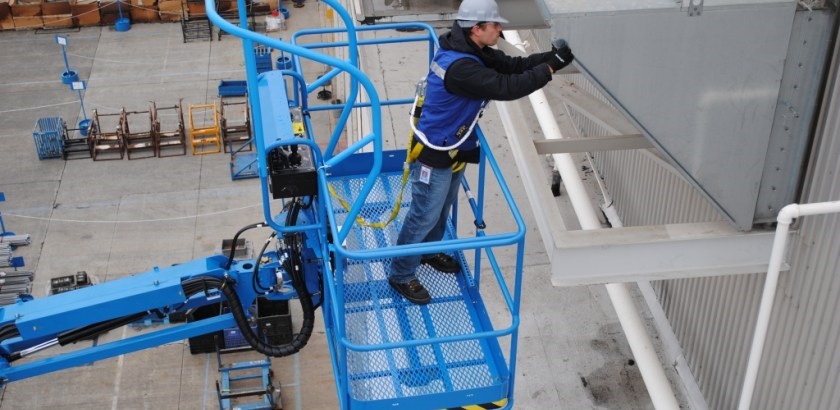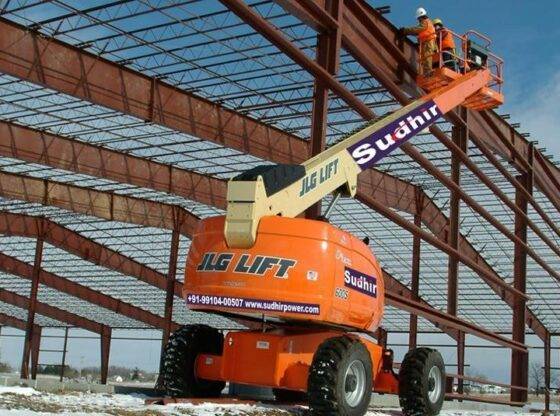Operating a boomlift can be a challenging task, especially when it comes to working at heights. To ensure the safety of workers, it’s essential to have proper fall protection in place. In this article, we’ll discuss the different types of fall protection required to operate a boom lift and why it is crucial for worker safety.
So, if you are a construction worker, industrial maintenance personnel, or a facilities manager. This will help you understand the importance of fall protection and make informed decisions about workplace safety. Let’s dive in!
Types of Fall Protection
When it comes to fall protection while operating a boom lift, there are several types of fall protection systems to consider. Here are the most common types:
Personal Fall Arrest Systems (PFAS)
Personal Fall Arrest Systems (PFAS) are used to protect workers from falls while operating a boom lift. A PFAS typically consists of a full-body harness, a lanyard, an anchorage connector, and an anchorage point.
The harness fits over the worker’s shoulders, around the torso, and around the legs. The lanyard is then connected to the harness, and the other end is connected to an anchorage point. The anchorage point must be capable of supporting at least 5,000 pounds per worker attached to it.
There are two types of PFAS: shock-absorbing and non-shock-absorbing. Shock-absorbing lanyards are designed to stretch and absorb energy during a fall, which reduces the impact on the worker’s body. Non-shock-absorbing lanyards, on the other hand, do not have this feature and can result in a more forceful impact.
You should also know that a PFAS should only be used as a last resort when other fall protection measures, such as guardrails or safety nets, are not feasible. Additionally, workers should be properly trained in the use and inspection of PFAS equipment.
Body Harnesses and Lanyards
Body harnesses and lanyards are also important fall protection equipment when working from a boom lift. A body harness is a full-body safety harness worn by the worker, while a lanyard is a piece of equipment that connects the harness to the boom lift. The body harness is designed to distribute the force of a fall over a larger area of the body, while the lanyard is designed to limit the distance that a worker can fall.
When selecting a body harness, you must ensure that it fits properly and comfortably. The harness should be snug, but not too tight, and should be adjusted to fit the worker’s body. It should be inspected regularly to ensure that it is in good condition and free from damage or wear.
The lanyard should also be selected based on the specific needs of the job. There are different types of lanyards available, including shock-absorbing lanyards, self-retracting lanyards, and adjustable lanyards. Adjustable lanyards can be adjusted to the correct length for the job.
Guardrails
Guardrails are horizontal barriers designed to prevent falls from elevated work areas, such as rooftops and scaffolds. They provide passive protection, meaning they require no action on the part of the worker to be effective. Guardrails are an essential component of fall protection systems and are required by OSHA and other regulatory bodies.
Guardrails consist of three main components: posts, rails, and toeboards. The posts are the vertical supports that hold up the rails. The rails are the horizontal members that run between the posts and provide the primary barrier against falls. Toeboards are mounted at the base of the posts and prevent objects from falling off the elevated work area.
There are two main types of guardrails: permanent and temporary. Permanent guardrails are installed on a permanent basis and are typically made of steel or aluminum. They are designed to provide long-term fall protection for workers in high-risk areas.
However, temporary guardrails are portable and can be easily moved and installed as needed. They are often made of lightweight materials such as plastic or fiberglass and are used for short-term fall protection on job sites.

Importance of Regular Inspection and Maintenance
Regular inspection and maintenance of the fall protection system in the boom lift are crucial to ensure the safety of operators and other workers on the job site. Here are some reasons why:
- Ensure equipment is in good working condition: Regular inspections can identify any issues or potential problems with the equipment that can be addressed before they become major safety concerns. This ensures that the fall protection system is in good working condition and ready to be used when needed.
- Compliance with regulations: Regular inspections and maintenance are required by regulatory bodies such as OSHA to ensure the safety of workers. Compliance with these regulations helps you avoid any penalties or fines that may result from non-compliance.
- Extends the life of the equipment: Regular maintenance and inspections can help extend the life of the equipment by identifying potential issues before they cause major damage. This can save money on repairs and replacement costs over time.
- Boosts operator confidence: Knowing that the fall protection system has been regularly inspected and maintained can boost operator confidence and make them feel more comfortable and safe while operating the equipment.
- Reduces the risk of accidents: Regular inspection and maintenance of fall protection systems can reduce the risk of accidents on the job site. After addressing potential safety hazards, workers are less likely to be injured while operating the equipment.
Conclusion
The use of a boom lift can be a practical and efficient solution for many jobs requiring height access. However, it’s important to ensure that proper fall protection is in place before operating a boom lift. This includes a body harness and lanyard that are correctly attached to an approved anchor point. Additionally, regular inspection and maintenance of the equipment are essential to ensure it is safe to operate. If you are looking for a trusted company to help you with the right PFAS, have a look at Kanoo Machinery. We offer a wide variety of solutions and have helped a range of clients with their varying requirements. Visit our website or get in touch with our team at km100.uae@kanoo.com.



















